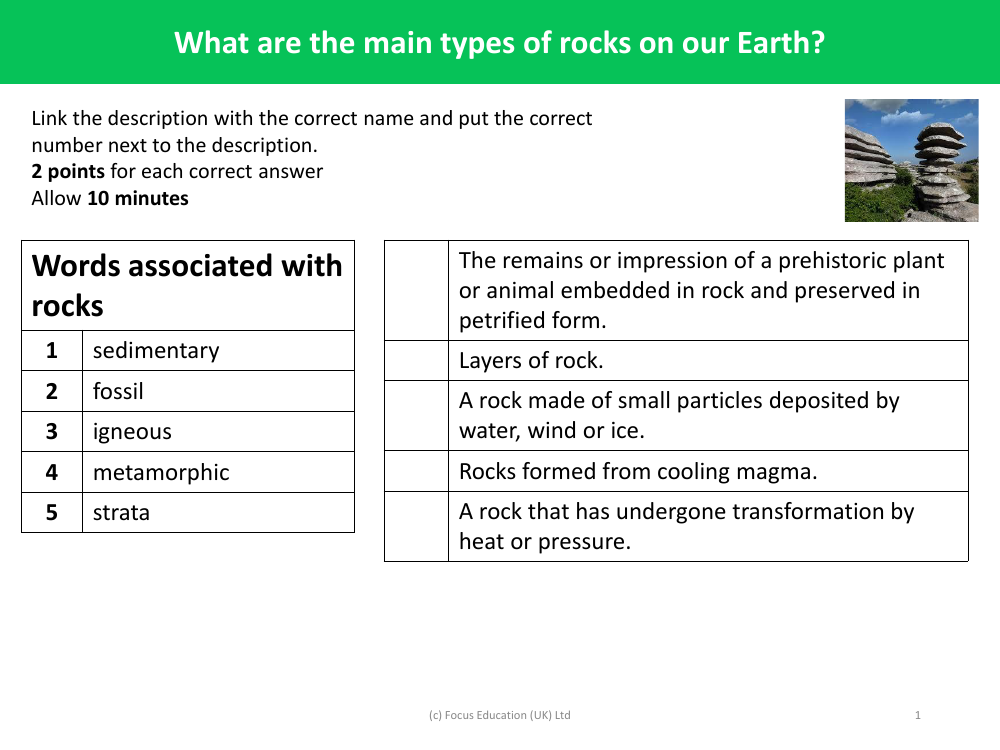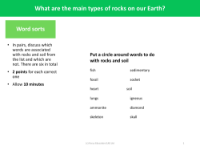Match up - Types of rocks

Science Resource Description
The main types of rocks on Earth can be categorized into three distinct groups based on their formation processes. These groups are igneous, sedimentary, and metamorphic rocks. Each type has unique characteristics and origins that distinguish them from one another.
Igneous rocks (3) are formed from the cooling and solidification of magma or lava. This process can occur either beneath the Earth's surface, resulting in intrusive igneous rocks, or on the surface following a volcanic eruption, leading to extrusive igneous rocks. Sedimentary rocks (1) are typically composed of small particles that have been transported and deposited by water, wind, or ice. These particles accumulate in layers and, over time, are compacted and cemented together to form rock. Metamorphic rocks (4) are those that have been fundamentally changed by heat, pressure, or chemically active fluids. This transformation occurs while the rock remains solid and can result in new mineral assemblages and textures. Lastly, fossils (2) are the preserved remains or impressions of ancient life forms that have been embedded in rock, often found within sedimentary layers. These layers of rock are referred to as strata (5), which are distinguishable layers within sedimentary rocks that can often be seen as bands of different colors or textures.













